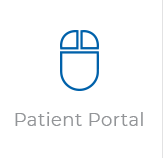Nasal Obstruction

What is Nasal Obstruction?
In America, more than 20 million people are expected to suffer from nasal obstruction. Nasal obstruction can be described in many ways. Most patients report a sensation of a chronically stuffy nose, or nasal congestion. These symptoms can be seasonal in nature, or occur year-round. Sometimes, they tend to be worse at night when lying in bed. Nasal obstruction can significantly affect quality of life by contributing to conditions including exercise limitation, snoring, poor CPAP tolerance, sore throat and sinusitis.
What Causes Nasal Obstruction?
Multiple factors can contribute to nasal obstruction including allergies (seasonal or year-round), nasal irritants (such as tobacco smoke), prior nasal surgery, or nasal trauma. There are also multiple anatomic features of your nose that can contribute to nasal obstruction. These include a deviated nasal septum, enlarged nasal turbinates, or a condition called nasal vestibular stenosis (a tendency for the nose to collapse when you take a breath in).
How is Nasal Obstruction Normally Treated?
For almost all patients, the treatment of nasal obstruction begins with the consistent use of intranasal medications. Patients are recommended to use nasal saline spray in addition to consistent use of an intranasal steroid spray, such as fluticasone nasal spray. Both of these medications are available over the counter.
When using intranasal steroids, there are some important points to remember. First, the spray does not provide significant benefit until there has been at least two weeks of consistent use. An adequate trial of this medication often requires daily use for at least 6-8 weeks. Second, proper administration of the medication is very important. Patients are encouraged to point the tip of the nasal spray bottle away from the center of their nose, in an upward and back direction, toward the ear. This distributes the spray in the correct location in the nose, and reduces the risk of a common side effect, nosebleeds.
If you have significant allergy symptoms, or if your symptoms are more seasonal in nature, you could consider the addition of an oral antihistamine, such as Claritin or Zyrtec.
If these medications do not provide significant benefit, you should see an ENT doctor to discuss additional options for treatment of nasal obstruction. This could include further medical workup or treatment with allergy testing, or the addition of an intranasal antihistamine spray. However, there are also a multitude of nasal procedures available to patients with symptoms of nasal obstruction despite medical treatment. These include procedures that can be done in the office under local anesthesia, in addition to procedures that require a trip to the operating room. Often times, procedures to treat nasal obstruction can reduce or eliminate the need for daily nasal spray use, depending on other symptoms the patient may have. Overall, there are many options for patients living with chronic nasal obstruction, and many of these can provide a significant improvement in a patient’s quality of life.
Call 615-867-8110 today to schedule an appointment, and visit www.mmclinic.com/ENT to learn more!

By Britni Caplin, M.D. - MMC Comprehensive ENT Specialist
Dr. Caplin spent her early life in West Virginia, prior to attending medical school and completing residency at Vanderbilt University in Nashville. Prior to her arrival at MMC, she worked in private practice in Massachusetts, then served as the Chief of Otolaryngology within the Tennessee Valley Healthcare System, while also holding an appointment as an Assistant Professor at Vanderbilt University Medical Center in the Department of Otolaryngology – Head & Neck Surgery.






